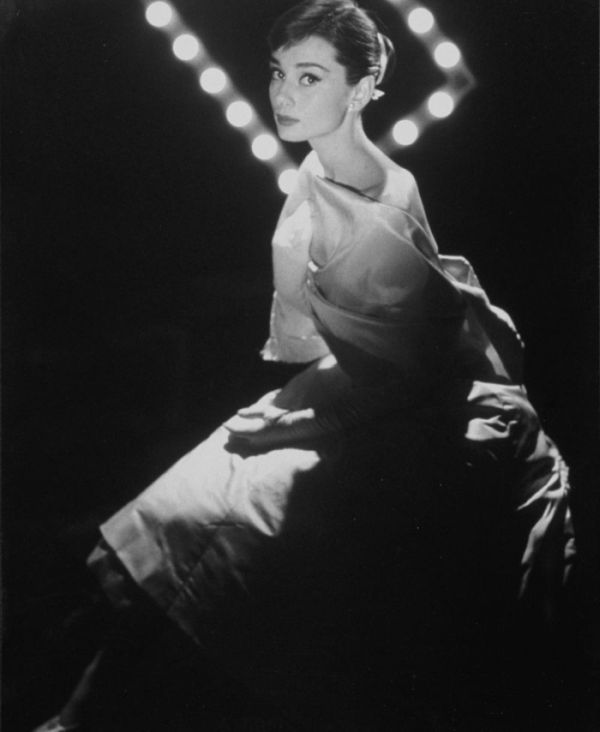|
|
Audrey Kathleen Ruston Hepburn
|
Playing opposite Shirley MacLaine and James Garner, her next role in William Wyler's lesbian-themed drama The Children's Hour (1961) saw Hepburn and MacLaine play teachers whose lives become troubled after a student accuses them of being lesbians. The film was one of Hollywood's earliest treatments of the subject of lesbianism, and perhaps due to the illiberal state of society, the film and Hepburn's performance went seemingly unnoticed both critically and commercially. Bosley Crowther of The New York Times, however, noted that "it is not too well acted" with the exception of Hepburn who "gives the impression of being sensitive and pure" of its "muted theme" while Variety magazine also complimented Hepburn's "soft sensitivity, marvellous projection and emotional understatement" adding that Hepburn and MacLaine "beautifully complement each other."
Her only film with Cary Grant came in the comic thriller Charade (1963). Hepburn, who plays Regina Lampert, finds herself pursued by several men who chase the fortune her murdered husband had stolen. The role earned her third and final competitive BAFTA Award and accrued another Golden Globe nomination though critic Bosley Crowther was less kind: "Hepburn is cheerfully committed to a mood of how-nuts-can-you-be in an obviously comforting assortment of expensive Givenchy costumes." Grant (59 years old at the time), who had previously withdrawn from the starring male lead roles in Roman Holiday and Sabrina, was sensitive about the age difference between Hepburn (at age 34) and him, making him uncomfortable about the romantic interplay. To satisfy his concerns, the filmmakers agreed to change the screenplay so that Hepburn's character would be the one to romantically pursue his. Grant, however, loved to humour Hepburn and once said, "All I want for Christmas is another picture with Audrey Hepburn."
Paris When It Sizzles (1964) reteamed Hepburn with William Holden nearly ten years after Sabrina. The Parisian-set screwball comedy, called "marshmallow-weight hokum", was "uniformly panned" but critics were kind to Hepburn's creation of Gabrielle Simpson, the young assistant of a Hollywood screenwriter (Holden) who aids his writer's block by acting out his fantasies of possible plots, describing her as "a refreshingly individual creature in an era of the exaggerated curve." Critical reception was worsened by a number of problems that plagued the set behind the scenes. Holden tried, without success, to rekindle a romance with the now-married actress; that, combined with his alcoholism made the situation a challenge. Hepburn, after principal photography began, demanded the dismissal of cinematographer Claude Renoir after seeing what she felt were unflattering dailies. Superstitious, she also insisted on dressing room 55 because that was her lucky number (she had dressing room 55 for Roman Holiday and Breakfast at Tiffany’s) and required that Givenchy, her long-time designer, be given a credit in the film for her perfume.
"Not since Gone with the Wind has a motion picture created such universal excitement as My Fair Lady," wrote Soundstage magazine in 1964, yet Hepburn's landing the role of Eliza Doolittle in the 1964 George Cukor film adaptation of the stage musical sparked controversy. Julie Andrews, who had originated the role in the stage show, had not been offered the part because producer Jack Warner thought Hepburn or Elizabeth Taylor more "bankable" propositions. Initially refusing, Hepburn asked Warner to give it to Andrews but, eventually, Hepburn was cast.
|
|









